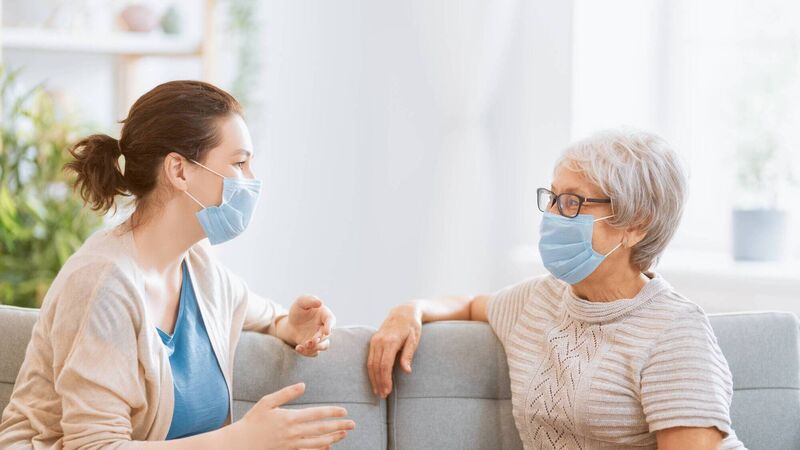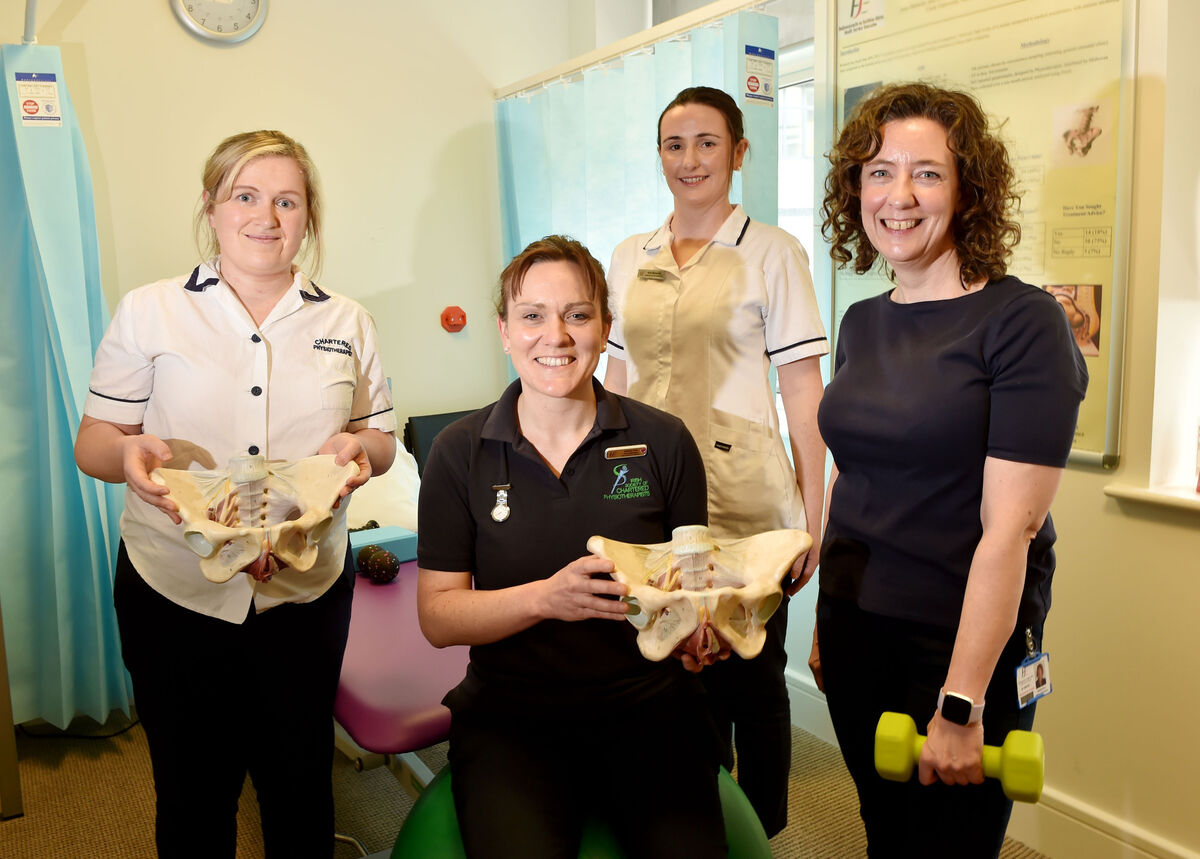Women should not accept incontinence as normal

If you're suffering from incontinence, talking to your GP or health advisor is always the best first step — if nothing else, you need to rule out causes like prolapse, fibroids or more sinister issues.
Incontinence, particularly after childbirth, is a huge problem and as Seána Ryle, senior physiotherapist in women’s health at Cork University Maternity hospital (CUMH) and mother of three explains, women shouldn’t have to put up with it.
There is help but she says the subject of women having urinary leaks and not being able to control their bladder is still taboo.
“Walk into any supermarket, down the sanitary products aisle and you will see women buying incontinence pads,” says Seána.
There is, Seána says, a kind of "ah sure look it’s only a couple of drops” and “it doesn’t happen too often” attitude, but leaking is not normal.
Seána says it is more common as we age and that it can deteriorate when you hit menopause. Ideally, she says we need to encourage all younger women to book in for an assessment and get treatment if needed because she stresses "urinary leaks" are not normal and we shouldn’t accept incontinence at any age.
Seána specialises in assessing and treating women with pregnancy-related pelvic girdle pain, urinary incontinence and other related pelvic organ dysfunctions. When she asked some of her patients would they chat about their treatment for the purpose of this feature she said nobody felt comfortable enough to talk about their journey through incontinence treatment.
“Nobody wants to be known as the person who wets herself. There is still a stigma and that is a pity because when we don’t talk about it that perpetuates the problem and is partly the reason why many women put up with it, wear the dark clothes, wear the pad and avoid certain things,” she says.
Seána estimates up to one in four women can have an issue with incontinence and she says it ranges in severity. It can start with young girls with giggle incontinence (they get excited and have a bladder leak) to women with severe incontinence who can’t function in their everyday life.
Seána says: “Typically, yes it does change your quality of life. You start doing certain things (drinking less and going to the toilet more frequently) and start avoiding activities. It happens with so many patients across the board, they start not going for that walk, not using public transport, not going to that shop because there isn’t a toilet nearby.”
There are two types of urinary incontinence, she explains: stress urinary incontinence and urge urinary incontinence.
The former is when you experience some leakage when you cough, laugh, run, dance, sneeze, jump or shout so very much linked to an activity, while the latter is a sudden, intense urge to urinate, followed by a leak. Sometimes, Seána says women can have a combination of both mixed incontinence and that she says is why it is so important to get any kind of urinary incontinence assessed. All respond very well to physiotherapy.

“The message I want to get out there is that this is not normal, it is common (most of us experience it at some point but if it continues then you need to get assessed and there is treatment for it). If we catch it early it can be controlled relatively easily.”
So when should women consult with their GP?
“I would say think about how bothersome it is to you. If it stops you from doing things, if it is new and something you have not had before. If you just had your baby a few weeks back and everything was okay and then you go back running and it starts and becomes bothersome.
"Go to your GP and it is really important that you don’t get the fob off. Women tell me their experiences of being told ‘oh you have just had a baby what do you expect?' Or 'if you are past menopause, what do you expect?' I still hear that and it makes me very cross.”
Also she says you may hear the word ‘peeze’ ie a sneeze that results in you wetting yourself and jokes about trampolining. “Again, it kind of trivialises it and makes a joke about it which doesn’t really help things.”
Going to your GP, Seána says is always the best first step — if nothing else to rule out causes like prolapse, fibroids or more sinister issues.
After that, the next step should be to see a specialist women’s health physiotherapist who will do a vaginal examination, assess the pelvic muscle tone and provide a muscle training programme.
“Here at CUMH, if incontinence has been identified as a problem whilst pregnant or is a new onset after birth, the physiotherapy service is here to help so you just need to ask for it, know you have this problem and ask for help — speak to your midwife, public health nurse or GP.”
Urinary incontinence can’t always be prevented and both pregnancy and childbirth can weaken the pelvic floor muscles. However, Seána explains you can improve your chances of good bladder health and minimise incontinence issues through lifestyle changes, bladder training and pelvic floor exercises. And if such conservative treatments don’t help she says your doctor might suggest medication or surgery.
“With urinary incontinence, the first thing we recommend is lifestyle intervention so to drink well. Some women drink lots of coffee and tea, others 4 litres of water each day but what is important here is to find a happy balance of 1.5 to 2 litres of fluid each day. Number two be aware of things that may irritate your bladder and that could be coffee or green tea so double-check is caffeine a stimulant or an irritant to your bladder. Reduce your bladder irritants. Weight is an issue. Smoking is another one and constipation is a big one.”
Research shows that committing to between 12 weeks and 16 weeks of physio (targeted floor muscle training) yields great results for lots of woman with stress incontinence.
For overactive bladder or urge continence, they need bladder retraining.
Other treatments outside physiotherapy are medication. For women who don’t respond to physio who are running or playing sport, they need an appointment for a pessary fitting (an internal support which is successful for many) or EVB shorts (an external supportive garment).
Going forward Seána says women need easy access to qualified and experienced women’s health physiotherapists. Imagine a service, where at a woman’s six-week check after birth when she mentions incontinence that the GP could just book an appointment with a women’s health physio in their local primary care centre.
Seána is a busy mum to three girls that arrived within 14 months of each other — her eldest Orla (12) was quickly followed by twins Lea and Aedin (now aged 11). She remembers in the early days after giving birth having some urinary leaks.
She is always surprised why women don’t talk about it with each other — “it happens and we need to talk about it and share information.” Four years ago Seána introduced The Bump Room to Cork so women could meet with a women’s health physio when pregnant.
“It’s a great way for me to talk to pregnant women about the conditions that I treat”.
It is a strengthening and cardio-based exercise class combined with ante-natal education. Classes are available countrywide —












